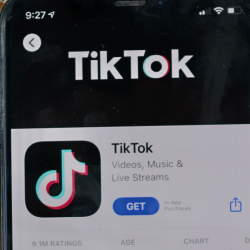Once considered a sneaky, yet undeniably clever way to drive website traffic, clickbait has become a victim of its own success across social platforms…
But it was never really a viable long-term strategy. All of us have been caught in its net at some time and the outcome is always the same, disappointment and the feeling of being duped. Is rickrolling really how any brand wants to define an audience engagement?
This clearly hasn’t been lost on Google either. It has used recent updates to its search algorithm to further differentiate its search experience from that on social platforms, which growing numbers of people are using as the starting point for their search journeys.
Google aims to improve the relevancy of search results by prioritising authentic content and has placed a renewed focus on serving relevant content of multiple types. Videos, images, user reviews, shopping and pricing are all now hosted on Google’s main search engine results page. It’s an approach that aims to consolidate all the information a user needs without them ever having to click through to a website.
Using content to build relationships
The Google algorithm also takes into account user intention by extrapolating adjacent information that might also be useful and serving it up in the ‘People also ask’ section. Essentially, Google is building a broader narrative around search terms using the content surfaced to answer the core and subsequent questions.
Content that is genuinely helpful now factors into search page ranking. Consequently, brands need to use storytelling, across all mediums, to take users on a journey – how could a product benefit me, in what ways, how do I use it, what more can I do with it… where can I buy it?
Demonstrating value creates a healthy dynamic between the brand and the user. By offering them the content they want to engage with — a supermarket might offer a simple guide to how to cook roast beef for instance — you’re providing a fair value exchange.
So, think about using combinations of useful content, whether that’s text, audio or video, across complementary channels. This should offer a framework to develop two-way relationships. In the case of our supermarket this could potentially direct people to face-to-face interactions in-store.
Brand building through content across a combination of digital and physical channels generates customer loyalty and first-party data insights that will help cement relationships over the longer term. The value exchange lies in the fact that each party is invested with the potential for a mutually beneficial outcome. By comparison, clickbait is lying by omission.
More than words
How and where audiences look for information is changing across both push and pull channels and brands need to reflect this in how they present information to audiences. Notably, we need to remember that storytelling online doesn’t have to centre on the written word.
TikTok overtook Google as the world’s most popular web domain and this is influencing what type of content people are searching for and engaging with.
Video, audio and imagery can all be used to tell a story and combined they can offer more than the sum of their parts when it comes to building a narrative. In fact, the evolution of Google search towards multimedia actively encourages it and makes image and video-led content a vital component in a brand’s media strategy.
Content should by its nature be about engagement and this doesn’t always lead to immediate results. Brand awareness and consideration can be just as significant over the longer-term and if you offer content that is useful, relevant and engaging, then there’s a good chance that person will return — possibly directly to your website.
The value of value exchange
As people become less likely to part with their money during an economic downturn, trust has become a core commodity. Storytelling has a major role to play in building a brand’s authority within a given category. That means content is more valuable than ever, and no-one can afford to risk antagonising a potential customer.
There are no quick content ‘cheats’ to push your brand to the top of the Google search results page. The process of developing different types of content to cover both intention and potential may be time-intensive, but the long-term benefits make it a worthwhile investment.
Google has been able to effectively banish clickbait from search, if the social networks want to position themselves as viable walled garden alternatives to the big search providers they will need to work harder to ensure it goes the way of the dodo.
Featured image: Clem Onojeghuo / Pexels































